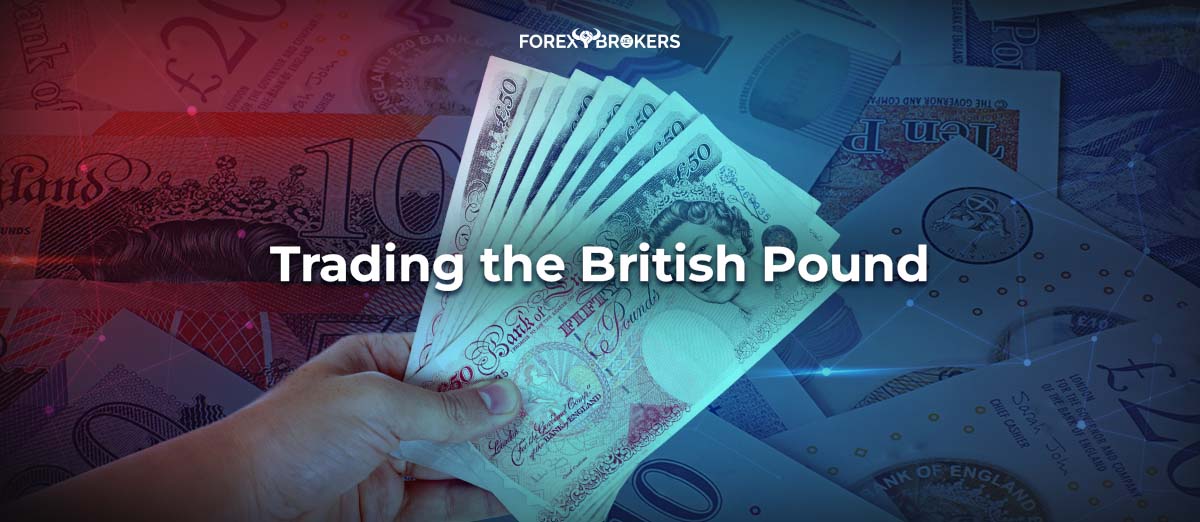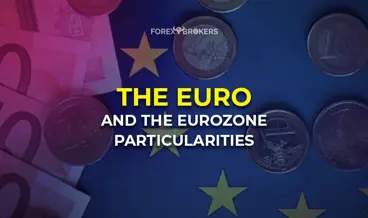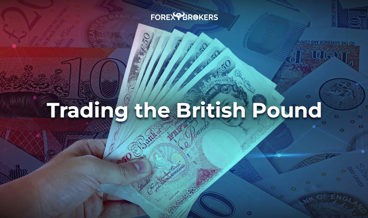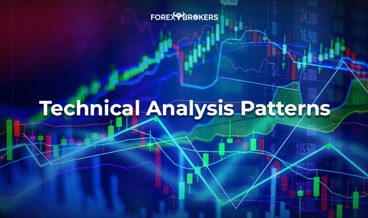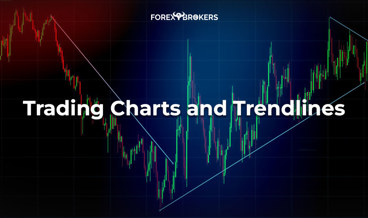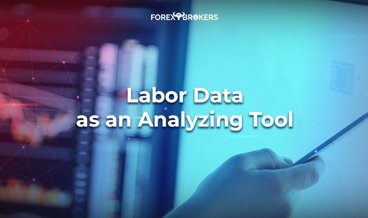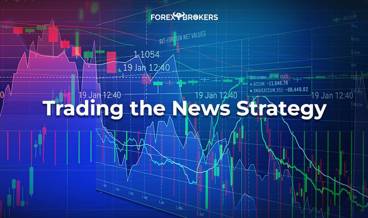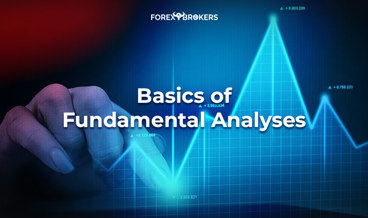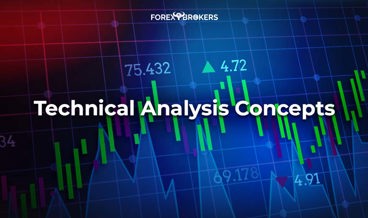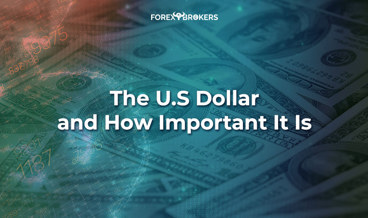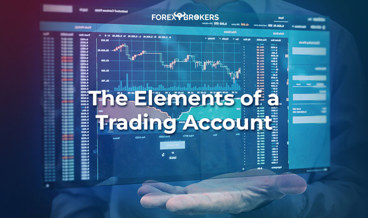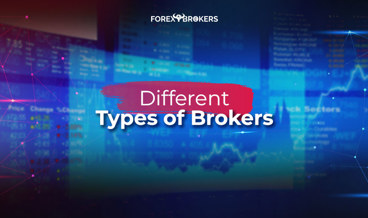The British pound (GBP) is one of the most important currencies part of the Forex dashboard. It should be as it used to be the world’s reserve currency up until the moment the USD replaced it.
The GBP is on everybody’s lips recently. Since the 2016 Brexit vote, when the United Kingdom decided to leave the European Union, the currency has lost a lot of its value. To have an idea about the impact of such a decision, just imagine that in the course of a few days, the GBPUSD pair (and other GBP pairs, too) dropped over 3,000 pips, a staggering move by all standards.
No one knows what the future brings, but to those arguing that the GBP depreciation is only because of political decisions, a strong argument is against it. Nowadays, the GBPUSD pair trades around 1.22 (at the time of writing this article), but at one point in time, it was 10 times higher against the dollar. Times, as we all know, change, and currencies follow not only the economic performance of a country but also societal changes.
At the helm of the British Empire, the pound was king. No longer that’s the case, with the decline of the empire being first visible in the value of its currency. Coming back to current times, the pound is more volatile than other currencies part of the currency dashboard, definitely more volatile than the Australian dollar mentioned in the previous article.
This article will cover, among others, the particularities of the British economy as well as the most important economic releases to watch. We’ll also look at some technical details for the relevant GBP pairs as well as the role the Bank of England has in the stability of the British pound.
Particularities of the British Economy
The United Kingdom’s economy is the fifth one in the world, with only the German economy being larger in Europe. Even though an active member of the European Union (still is at the date this article is written) for many years, the United Kingdom chose to keep its own currency, the British pound.
Throughout the 19th century, the British economy dominated international trade, the United Kingdom being the country where the industrial revolution started. Nowadays, the city of London is the most important financial center in the world, with New York and Tokyo following closely.
Meanwhile, the British economy changed dramatically. If at the heart of the industrial revolution sat the manufacturing industry, that’s not the case anymore. The said sector nowadays accounts for about 17% of the gross domestic product (GDP), with the services sector responsible for around 80% of the rest of the economic output.
Therefore, when looking at the economic releases referring to the two sectors (PMI manufacturing and PMI services), the one that matters the most for the GBP’s value is the PMI services because of the big chunk of the GDP that corresponds to services.
In other words, if the PMI manufacturing in the United Kingdom drops below the 50 level, it means that the manufacturing sector experiences a contraction. However, it doesn’t mean that the entire United Kingdom’s economy contracts, as long as the services sector PMI remains above the 50 level, the level that differentiates between contraction and expansion.
In the last 64 years, the United Kingdom’s GDP grew on average, 0.6% quarterly, with the best quarter in 1973 (5%) and the worst quarter at the start of 1974 (-2.7%). Having said that, it is worth noting that when the UK GDP shrank in the second quarter of 2019, the United Kingdom was one of the single economies among the developed world that shrank in that period.
Bank of England
Founded in 1694, the Bank of England is in charge of setting the monetary policy in the United Kingdom. It is one of the most conservative central banks in the world, and in the last years, it follows closely on the Federal Reserve of the United States’ footsteps.
For instance, when the Fed in the United States lowered the interest rate to zero to fight the financial crisis in 2008, the Bank of England did the same. Moreover, the Fed began shortly buying government bonds as part of a quantitative easing program. The Bank of England followed soon, and the list may continue.
In the next section of this trading academy, there’s one article dedicated exclusively to the Bank of England and its role for the GBP. As a representative central bank in charge of setting the monetary policy for the United Kingdom and the British pound, it deserves special attention.
Owned by the UK government and accountable to the general public as well as to the parliament, the Bank of England’s ruling body, the Monetary Policy Committee (MPC), sets the monetary policy every six weeks or about eight times per year. Every time the MPC announces a change in the interest rate level, a press conference follows, explaining the reason for it, and the governor answers questions from the press representatives.
Economic Data to Consider When Trading the British Pound
A highly developed and market-oriented economy, the United Kingdom’s economy is one of the leading in the developed world. Its currency, the British pound, is one of the most volatile currencies that fluctuate on any economic data release. Moreover, the GBP is part of the dollar index, making it an essential contributor to the world’s reserve currency volatility too.
The following economic data out of the United Kingdom strongly influence the value of its currency. Many times, a few days or even more, the market consolidates, expecting the release.
Besides the economic data mentioned in this part of the article, traders interpreting the fundamental picture for any given currency must look at the overall economic picture. Every detail has its role. Changes in household wealth, capacity utilization, consumer expectations, nominal wages, unit labor cost, and so on are only some examples of often forgotten data.
Interest Rate
The Bank of England is in charge of setting the interest rate and the general monetary policy in the United Kingdom. Currently sitting at 0.75%, it followed the trend set by the Federal Reserve in the United States in the last years.
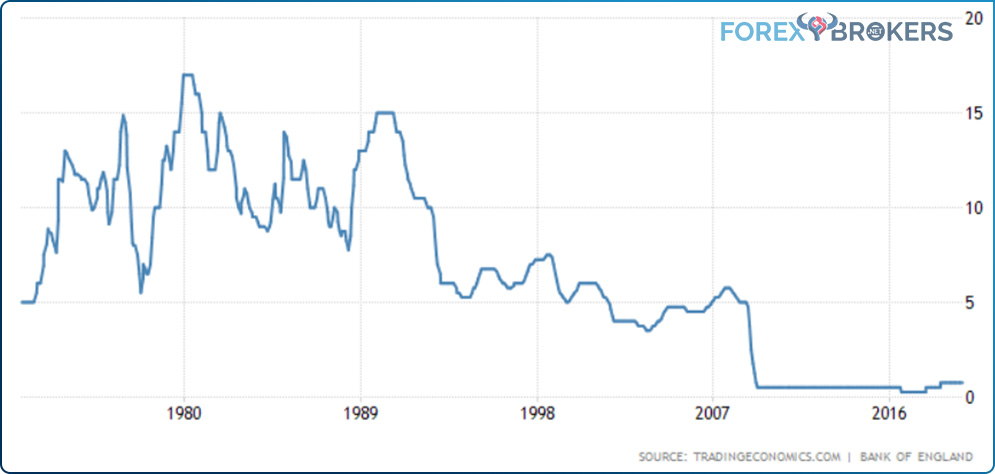
The last decades brought low inflation levels in almost all developed economies. As such, central banks, the Bank of England included, were forced to cut the interest rate level to extreme levels.
In some parts of the world, they even went into negative territory. It isn’t the case in the United Kingdom, where the Bank of England raised the interest rate level from zero to 0.75%, mimicking the Fed. Now that the Fed began to ease again (September 2019), the Bank of England most likely will follow suit as it usually does.
Also called the bank rate or the base rate, the interest rate in the United Kingdom is set by the MPC. It is the most important economic event for the pound, providing the MPC changes the rate.
Gross Domestic Product (GDP)
The GDP is one way to compare economies around the world. Behind the actual growth rate (typically annual growth rate), several other things must be considered. Thus far, in this trading academy, we’ve talked about GDP in previous articles, but now it is time to expand a bit the concept.
When looking at the GDP of a country, two approaches exist—the output and income approaches. In the first case, the GDP measures the market value of all final goods and services produced. The second approach refers to the aggregate income realized by all parts (households, companies, or government).
One important thing about the GDP is that if the goods and services can’t be sold in the market, they won’t be included in the GDP measurement. Another thing is to compare the same metric when looking at the GDPs of different countries. For instance, the nominal GDP shows the value of goods and services measured at current prices, while the real GDP shows the total expenditures to produce products and services with unchanged prices. In other words, it filters for inflation.
Furthermore, GDP per capita is more relevant in specific situations, especially when comparing GDPs of different countries. By dividing the GDP by the size of the population, one can find out a proper comparison metric among various countries with different nominal or real GDP.
- GDP in the United Kingdom
The standard way is to look at the GDP annual growth rate and compare it with other countries. It shows if the economy is expanding or contracting and how well it is doing concerning its competitors.
Here’s an example of how to look at various areas’ contribution to GDP to form an educated guess about the stronger inputs. Traders can find out data on GDP from the following:
- Agriculture
- Construction
- Mining
- Manufacturing
- Public administration
- Services
- Transport
Moreover, a close look at the components of GDP using the expenditures approach offers further details. For instance, consumer spending, exports, imports, government spending, or gross private domestic investment all contribute to the GDP and allow traders to form a real picture of how the economy is performing.
The m/m version is released about 40 days after the month ends, and since July 2018, it has a different format. Before this format, the GDP has different versions such as preliminary, secondary, and final, taking its leads from the way the United States releases it.
Claimant Count Change
The claimant count change shows the change in the number of people who applied for unemployment benefits. Basically, these people “claim” unemployment benefits, having lost their job recently.
Hence, there is an inverse relationship between the claimant count change and the way the GBP reacts. Higher numbers lead to lower GBP, while lower ones have a positive effect on the currency.
It is always a good idea to interpret historical data too. It offers a glimpse into how the job market evolves and gives fundamental traders an edge when trying to find out how the economy performs in the medium to long term.
In other words, interpreting the data is more than just the actual number. It is essential to see not only if it is a positive or negative number but also the changes in the long run.

For instance, the chart above tells us that the claimant count number in the last five years is on a steady rise. Eventually, the figure turned positive and remained so for the previous year and a half. It suggests a struggling economy, unable to create enough jobs to keep the claimant count change into the negative territory.
If we consider the uncertainty brought by the Brexit referendum and the years that followed without a clear solution, we have all the ingredients of an economy struggling to perform at its best. In any case, the claimant count change brings volatility on the GBP pairs; therefore, it is closely watched by all traders with open positions ahead of its release.
Current Account
Showing the difference between imported and exported goods, the current account also considers services, income flows, or unilateral transfers from the previous quarter. Released about 85 days after the quarter ends, it is positive for the currency if the actual data exceeds the forecast.
Current account should not be confused with the trade balance release as a portion of it tends to duplicate the info provided by the trade balance. Because it is linked to currency demand, the information provided by the current account release matters a lot for traders in search of the GBP direction.
Inflation Rate
Inflation or the consumer price index (CPI) is closely watched by both traders and the Bank of England. With a mandate of price stability and a 2% target for inflation, the Bank of England sets its monetary policy based on how inflation fluctuates.
Higher inflation than expected is bullish for the currency because traders’ expectations grow that the Bank of England will hike the interest rate level. On the contrary, low inflation is bearish as the Bank of England most likely intervene and cut the interest rate level.
The current 1.7% inflation level in the United Kingdom is close to the 2% target. If we consider it the only benchmark for interpreting the Bank of England’s job, then we can say that the bank did an excellent job on its price stability mandate.
The inflation rate in the United Kingdom used to be much higher. In the early ’90s, it hovered around 4%, subsequently falling to the 2% target. Obviously, the bank rate set by the Bank of England was higher.
Recent history reveals inflation almost turned negative. In fact, it did for a while after the price of oil fell abruptly from over $100 to below $30. It triggered a deflationary wave around the world, and inflation in the UK fell below zero.
Besides the CPI release, the inflation letter report is closely watched by investors interested in how the British pound will perform in the future. The report often acts as a substitute for the press conference as MPC holds one only if it changes the interest rate level. The inflation report provides the Bank of England’s projection for inflation and economic growth for the period ahead, typically a couple of years.
Personal Disposable Income
After paying taxes, what’s left from the personal income is the so-called personal disposable income—more precisely, what’s left to spend. The higher, the better as higher personal disposable income means there’s more left to spend on goods and services.

Unemployment Rate
Like in the case of other currencies part of the Forex dashboard, the unemployment rate is a key indicator for interpreting the strength of the United Kingdom economy. Therefore, it strongly influences the GBP course.
The typical interpretation works here too: a higher unemployment rate is negative for the currency as it reflects a struggling economy. On the other hand, low unemployment levels point to strong economic performance.
However, as we’ve mentioned in a previous article, the unemployment rate is a lagging indicator. Thus, it isn’t unusual for the unemployment rate data to diverge from data provided by other indicators that lead.
Purchasing Managers’ Index (PMI)
In the United Kingdom, three PMI releases exist for the manufacturing, services, and construction sectors. As a service-based economy (meaning the services sector is responsible for the most considerable portion of the gross domestic product), the PMI services release outweighs in importance the other two.
Not to be understood that the PMI manufacturing and construction do not matter in the UK. They do; however, the market participants often discount the information provided by the two if the services sector keeps expanding at a healthy pace.
The standard interpretation of a PMI applies here too. We talk about the 50 level and how the market participants interpret the data. Any print above the level shows an expanding sector. Moreover, a print below 50 displays a contracting sector.
Out of the three sectors, the least important for the pound’s fluctuation is the construction sector. Only in the UK and Australia, there’s a dedicated PMI for the construction sector. In other countries such as the United States, multiple economic releases refer to the housing sector but no PMI.
Retail Sales
Released about 20 days after the month ends, the retail sales data offers a good indication about the health of the UK consumer. Positive surprises lead to higher GBP, while negative ones strongly affect the value of the pound. The overall print refers to all sales at the retail level, online sales included.
Weaker retail sales than expected means that the consumer spending slowed. Thus, the chances are high that the overall economic activity will slow down too. Long periods of poor retail sales lead to economic contraction and the Bank of England easing the monetary policy.
Retail sales also reveal what consumer expectations are. As we all know, psychology plays an important role in consumer spending. Confident consumers on their future income tend to spend a higher portion, and the retail sales indicator reveals if that’s correct or not.

Private Investment
An exciting release, private investment shows how industries change and what sectors perform or underperform. Traders analyzing the economic activity look at the size of private investment, if it shrinks or expands.
Naturally, higher and rising values point to economic benefits; thus, the currency, the GBP, is supported on any dip. Traders focus on identifying where the flows go and what industries have a positive or negative contribution to private investment.
Business Confidence
The CBI business optimism is a quarterly release underlying the particularities of doing business in the United Kingdom. Effectively, this is a survey that provides information on future developments for the United Kingdom’s businesses.
Low readings indicate uncertainty and economic troubles ahead. It refers to the next three months ahead and offers a gauge of what the business sector is doing.
Traders interpret the release based on the zero level. A positive number suggests improving conditions, while a negative reading spells trouble for the economic activity ahead. Especially noteworthy are trends in positive or negative data as prolonged periods that show pessimism lead to recession.
The Brexit uncertainty created a lot of frustration not only in the UK but also in the European Union. No one knows what the future will look like until politicians agree to a common ground on how to deal with the 2016 referendum outcome.
Since 2016, most of the CBI business optimism releases pointed to uncertainty, with little prospects for economic expansion. If we think of the ongoing Brexit negotiations, still unresolved at the time this article is written, then the business survey offers a precise view of how difficult it is to plan future business activity under such conditions.
Such a survey offers plenty of information about small businesses and their performance. For instance, the last release for the Q3 2019 reveals that the CPI business optimism indicator fell to the lowest level since the 2016 referendum. Not only that the investment spending plans weakened but also domestic and export orders fell at their fastest pace since the financial crisis. It paints an objective picture of an economy looking for direction. No wonder the GBP sits at its post-referendum lows, more than three years after the vote.
Tips and Tricks When Trading the GBP Pairs
All GBP pairs have an average true range (ATR) bigger than other currency pairs. For instance, the GBPJPY cross travels much more than other JPY cross pairs. The same is valid for other pairs too.
When trading the GBP, think of it as the trickiest currency part of the Forex dashboard. It reacts differently to news when compared with other currencies.
Whenever there’s volatility on a currency pair, the brokerage house charges extra fees—higher spreads, that is. Therefore, a common thing among currency pairs formed with the GBP is the somewhat higher spreads to pay for trading them. Naturally, the GBPUSD is the leading currency pair.
The GBP pairs react immediately to the news. Sometimes their reaction is so violent that no retail trader knows what just happened. Luckily, nowadays, the digital era makes it possible to quickly discover why the market moves by following some financial accounts on Twitter or by keeping the economic feed from one of the big financial news agencies open.
Most of the volatility comes during the London session. Often, right at the start of the London session, the GBP pairs, especially the GBPUSD, experience unusual volatility levels.
It is only reasonable because London is the biggest financial center in the world and that the London session is responsible for the main trends forming on the currency market. Moreover, for the few hours, when trading in London and New York overlaps, the flows in and out of the GBP pairs reach extreme levels.
Almost all GBP pairs have wider spreads when compared with other currency pairs (e.g., euro pairs). It makes them inaccessible to many retail traders, especially to scalpers that trade for small profits.
GBPUSD
Particularities:
- Also called cable, after the first cable laid down on the bottom of the Atlantic Ocean to connect the New York and London financial centers
- The most liquid and traded GBP pair
- Moves aggressively on data from both the United Kingdom and the United States
- Reflects the monetary and economic differences between two of the largest economies in the world
- Has a higher spread than many other major pairs (e.g., EURUSD, AUDUSD)
- Suitable for all types of trading styles and techniques
- Favored by traders using expert advisors for automated trading
- Has the tightest spread of all GBP pairs
EURGBP
Particularities:
- A cross pair popular among retail traders
- Depending on the type of the trading account, the spread can fall below one full pip (only some few years ago, trading the EURGBP pair required managing five pips or more bid/ask price).
- Since 2016’s Brexit referendum, it has increased volatility.
- Suitable for both range trading and trend trading
- Difficult to trade because of large margin requirements
- Traders must carefully calibrate the traded volume because of the increased value of one single pip.
- Particularly interesting to watch after the Brexit referendum
- Expected to grow in importance as Brexit negotiations come to an end
GBPJPY
Particularities:
- Like any JPY cross, it has a tight correlation with the world’s equity markets, especially the ones in the United States
- One of the biggest spreads among GBP pairs as for some account types, it exceeds three full pips (a high metric for 2019–2020 trading standards)
- Preferred by traders using automated trading because of few periods of consolidation
- Extremely active currency pair, especially on the London and North American sessions
- Its ATR is one of the biggest on the currency market
- Strongly correlated with the USDJPY major pair and the overall US stock market
- Reacts to news both from the United Kingdom and Japan
- When the Bank of Japan (BOJ) changes the monetary policy, it travels the most out of all the JPY pairs.
GBPCAD
Particularities:
- Another currency pair with high spreads when compared with other alternatives offered by the Forex dashboard
- Suitable for both scalping and swing trading
- Reacts aggressively to news that potentially affects the price of oil
- Reflects the economic and monetary differences between the United Kingdom and Canada
- The oil price plays a vital role in the GBPCAD fluctuation as it does in any currency pair that has the CAD in its component.
- A currency pair with decent volatility and liquidity levels
- Pretty expensive to trade because of large margin requirements and high spreads
GBPAUD
Particularities:
- A currency pair that has bigger ATR than normal
- Extremely volatile even when other currency pairs consolidate (e.g., Asian session)
- Reflects the international flows between two close economies despite the geographical distance between the two countries
- For most of the last years, the cash rate in Australia far exceeded the one in the United Kingdom; thus, being short, the GBPAUD pair paid a positive swap—carry trade.
GBPCHF
Particularities:
- Fell the most when the Swiss National Bank (SNB) dropped the fixed exchange rate on the EURCHF pair
- Cross pair often sold for the safety of the CHF
- Volatile, having one of the bigger ATRs from all currency pairs
- Wide spreads when compared with other currency pairs
- A cross often subject to SNB interventions
- Requires plenty of margin
GBPNZD
Particularities:
- An illiquid currency pair
- Suitable for scalping, if the trading system doesn’t mind the wide spread
- Unstable most of the times
- On economic releases from New Zealand (e.g., monetary policy announcement from the Reserve Bank of New Zealand) to spread becomes extremely wide
Political Uncertainty
The United Kingdom stunned the world with its decision to leave the European Union. What seemed to be a strong union was broken by a dangerous precedent created on the 2016 referendum.
Trading the GBP pairs since after was a challenge. The GBP pairs are volatile enough without any additional input; therefore, the last years were challenging because of the high political uncertainty.
Under such conditions, the market reacts in a chaotic matter. This is valid not only for the GBP but for all currencies. In other words, every article part of this trading academy that dealt with particularities of a specific currency should have a section dedicated to politics. I chose the United Kingdom and the GBP because of the tremendous political battle going on there in the last three years and a half, making the GBP an unstable currency.
In other words, when the market focuses on something else, economic data goes in second place. It doesn’t matter anymore if inflation is close to target or not—the GBP pairs will move on any political news instead.
Similar situations happen in various other parts of the world. When the presidential election is due in the United States, the race between the two candidates is responsible for substantial market swings.
Suddenly, the market adopts a risk-on/risk-off tendency, and all currency pairs react accordingly. On the last election race, when polls gave Hilary Clinton as leading the race, it was a risk-on move (i.e., higher stocks, higher USDJPY, higher EURUSD, AUDUSD, NZDUSD, GBPUSD). On the other hand, risk-off (the opposite of a risk-on move) started on any news that Trump is in the lead. As it turned out Trump won, and stocks rallied. Only after the election, the economic news and data regain its status as offering indications about where the currency market goes next.
Conclusion
As a former world’s reserve currency, the GBP maintains a key role in the international financial system. While the USD is preferred by sovereign nations when building foreign reserves, more and more countries also try to diversify by increasing their exposure to the GBP.
The pound has been on a weak trend in the last three and a half years since the Brexit vote. It started that day at 1.50, and it dropped well below 1.20 in the next few months. That’s a massive drop by all standards, effectively erasing people’s wealth overnight.
It was even the subject of a flash crash. It happened in the weeks or months that followed the Brexit vote as the GBP collapsed during the Asian session.
A “flash crash” is a term for market price action when it moves extremely fast. In the case of the British pound, it collapsed hundreds and hundreds of pips in less than five seconds. It did that in the most illiquid time, during the Asian session; thus, the effects were amplified.
In summary, a natural conclusion for this article would be that the GBP moves mainly on the BOE’s decisions. Moreover, on the ability of BOE to maintain price stability by keeping inflation close to the 2% target. Furthermore, traders should take their clues from the economic news released continuously in the United Kingdom.
However, until political uncertainty vanishes, and we see stability in the United Kingdom, everything mentioned above comes in second place. No one knows how long the situation will last; thus, trading the GBP under such conditions carries an increased risk when compared with trading any other currency pair part of the Forex dashboard.
